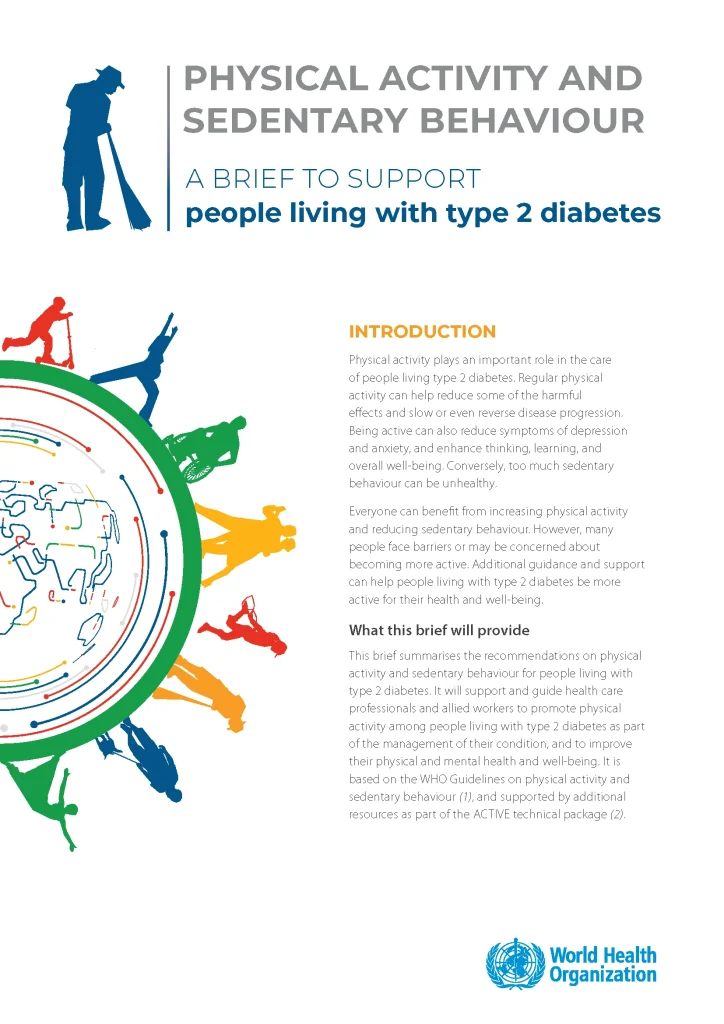Move More to Reduce Risk

Moving More to Reduce Your Risk of Type 2 Diabetes in Kenya
In Kenya, the risk of type 2 diabetes is increasing, particularly in urban areas where sedentary lifestyles and processed foods are becoming more common. Moving more to reduce your risk of type 2 diabetes is crucial. Physical activity, even in small amounts, can help manage your weight and improve your overall health, reducing your risk of developing this condition.
Whether it’s a brisk walk through the neighborhood, playing football with friends, or doing chores around the house like sweeping or gardening, every movement counts. In Kenya, where our culture encourages outdoor activities and communal living, moving more is an easy and natural way to lower your risk of diabetes.
Why Move More?
Incorporating regular physical activity into your daily routine has many benefits, including:
- Reducing your waist size: A larger waist size is a significant risk factor for type 2 diabetes. By moving more, you can manage your weight and reduce abdominal fat.
- Lowering blood pressure: Regular exercise helps regulate blood pressure, lowering the risk of diabetes and heart disease.
- Boosting your mood: Physical activity releases endorphins, improving your mood and reducing stress, which is crucial for overall health.
- Improving sleep: Regular activity can help you sleep better, ensuring your body recovers and functions optimally.
How Much Activity Do You Need?
The Kenyan government, in line with global recommendations, suggests that adults should aim for at least 150 minutes of moderate-intensity activity each week. That’s about 30 minutes, five days a week. If you prefer more intense activities like running or football, aim for at least 75 minutes of vigorous activity each week.
Moderate activity
Activities like brisk walking, cycling on flat ground, or taking a swim. You should feel your breathing increase but still be able to hold a conversation.
Vigorous activity
This includes activities like running, hiking up hills, fast swimming, or sports like football. You’ll find it difficult to talk while doing these activities.
Get Up and Move
To reduce your risk of type 2 diabetes, it’s important to get up and move regularly. You don’t need to join a gym—there are many simple ways to get active throughout your day, even from home. Here are some exercises you can do to stay active and keep your body healthy:
Get Active with Moderate Exercises

Walking
Walking briskly around your neighborhood or to the market is a great way to stay active. You can also walk instead of driving or taking public transport for short trips.

Cycling
Riding a bicycle around your area or for fun on weekends can be an enjoyable way to stay fit. Whether it’s around your estate or cycling through Nairobi’s Karura Forest, cycling is a great way to burn calories and reduce your risk of diabetes.

Swimming
If you have access to a swimming pool, swimming is a low-impact, full-body workout. You can join a local pool or even take weekend trips to public pools in cities like Nairobi or Mombasa.
Get Active with Vigorous Exercises

Running
Running or jogging is one of the simplest ways to engage in vigorous activity. Whether on a treadmill or outdoors in a park, it’s a powerful way to burn calories and improve your cardiovascular health.

Team Sports
Football, basketball, or even volleyball are great ways to stay fit. Join a local football team or play with friends at a neighborhood field to make exercise fun and social.

Online Fitness Lessons
If you prefer to stay at home, online fitness classes are a great option. There are plenty of free resources available on YouTube or other platforms, offering guided workouts that range from cardio to high-intensity interval training (HIIT).
Improve Muscle Strength

Heavy Gardening
Activities like digging, planting, or weeding in the garden can also improve your muscle strength. In rural and peri-urban areas, this type of physical activity is part of daily life and is great for keeping fit.

Carrying Groceries
Simple tasks like carrying your shopping bags or groceries can also help strengthen your muscles. Make your next trip to the market or supermarket an opportunity to lift and carry items to build muscle strength.

Yoga or Stretching
Practicing yoga or doing regular stretching exercises helps to improve your flexibility and strength. You don’t need fancy equipment—just a mat or towel at home will work. This is also a great way to relax and reduce stress.
Tips for Moving More in Kenya
1. Set Clear Goals:
Setting achievable goals will help you stay motivated. Whether it’s joining a local walking group or simply committing to taking the stairs instead of the lift, having a plan will keep you on track. You can also track your progress with fitness apps or smartwatches, which are becoming more popular in urban Kenya.
2. Plan Ahead:
Busy lives in Kenya can make it hard to find time for exercise. Try to plan your physical activity around your daily routine. You could walk to work, cycle around your neighborhood, or take part in community fitness events on weekends.
3. Start Small:
You don’t have to start with intense workouts. Begin by making small changes like walking instead of driving for short distances or getting off the matatu a stop earlier and walking the rest of the way. As you get used to moving more, gradually increase the intensity or duration of your activities.
Getting Support
If you're unsure where to start, ask at your local clinic about community programs or fitness groups. Many towns and cities in Kenya have local walking or fitness groups that can help you get started. Participating in activities with friends and family can also keep you motivated.
Even if you don’t have much time, just 10 minutes of walking or stretching can make a big difference. Try to fit in movement whenever possible—whether it’s dancing during a family celebration or playing with your kids at the park, every bit helps.
Move More Today to Reduce Your Risk
Start moving more today to take control of your health. Whether you’re in Nairobi, Mombasa, or a rural area, find ways to incorporate more activity into your routine. The more you move, the lower your risk of developing type 2 diabetes.
Find Out Your Risk of Diabetes >
